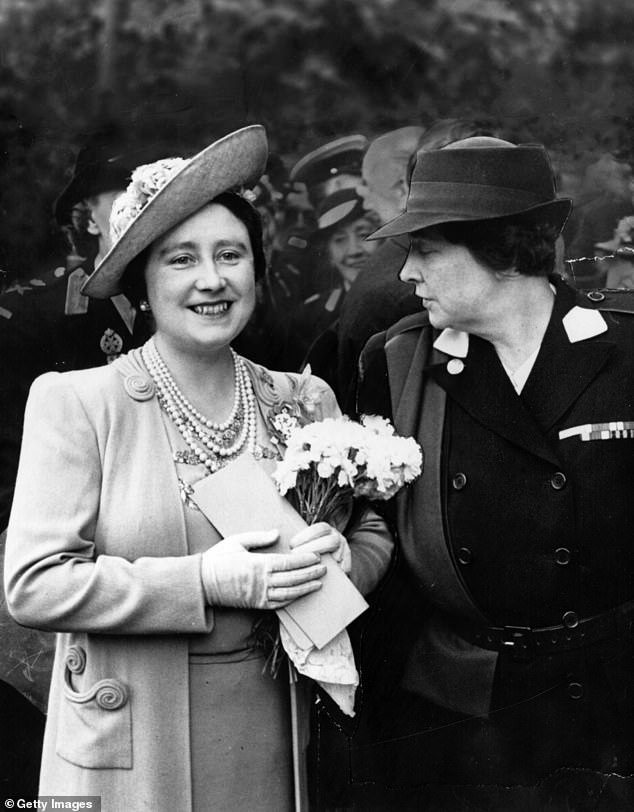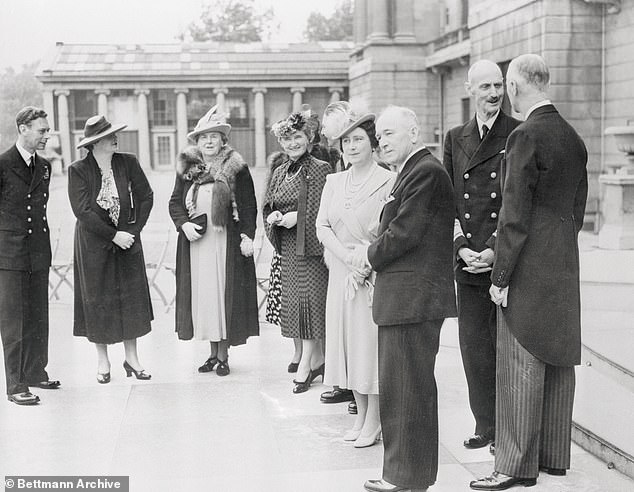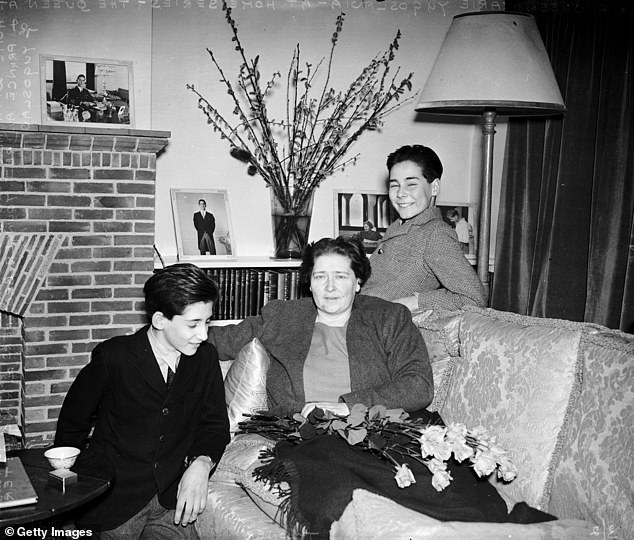She was a genuine queen living just a few hundred yards from Buckingham Palace – yet she was NOT a welcome guest. Can you guess why?
She was a queen who lived just a few hundred yards from Buckingham Palace, yet was not a welcome guest.
She had once worn tiaras and mingled freely with the crowned heads of Europe, but now not even a Christmas card!
So what was it about Queen Maria of Yugoslavia – a cousin of both Queen Elizabeth II and Prince Philip – that earned her the royal cold shoulder?
Was it her overbearing manner – Lilibet’s uncle described her as ‘That bitch’?
Queen Maria of Yugoslavia, consort of King Alexander of Yugoslavia in a 1922 portrait

Alexander of Yugoslavia and Princess Maria, who would soon become his bride

Queen Maria of Yugoslavia attends the unveiling of a sculpture in tribute to France by sculptor Ivan Rostrovitsch on Armistice Day in Belgrade
Was she a schemer and manipulator, intent on usurping the rule of her son, the young King Peter?
Was this why Maria was so unprepossessing in public that she could easily be mistaken for a cleaning lady?
Or was it – at a time when such things really mattered among the royal families of the world – that she was a lesbian and living openly with her lover?
History will probably decide that it was a combination of all of these things. But at the top of the list was without a doubt her sex life.
Mary was born the daughter of a king and the great-granddaughter of Queen Victoria. Her brother was a king, her sister a queen, and she married King Alexander I of Yugoslavia.
Her credentials couldn’t be more impeccable.
But it was a crush on a schoolgirl at the famous Heathfield School – whose more recent pupils included Princess Alexandra and Prince William’s former nanny Tiggy Legge-Bourke – that marked her favorite course in life.
Maria, daughter of King Ferdinand I of Romania, arrived at the school in the summer term of 1919.
She had spent her teenage years caring for the wounded in her home country of Yugoslavia during the First World War. By the time she arrived at Heathfield – described by her parents as a ‘finishing school’ but actually a secondary school for the upper classes – she was, unusually, 19 years old, but stood as one of the best-connected royals in Europe the doors wide open to receive her.
The plump but beautiful Maria – known as ‘Mignon’ – was placed in Form Va, where she sat next to Rosemary Cresswell, the illegitimate daughter of a wealthy Guards officer, Addison Baker-Cresswell.
Crucially, Rosemary was four years younger than Maria.
The princess’s mother had hoped that a dose of English education at a public school would “help her grow thin and keep her in touch with royal potential” – in other words, the prospects for a future husband. But she only had eyes for Rosemary.
Maria, now approaching her twentieth birthday, returned for the fall term and was placed in the sixth form, while Rosemary, only 16, remained in the fifth. In the spring of 1920 they continued their studies, but suddenly and without explanation, both girls left school at the same time.
If there was a scandal, it was hushed up. The historian Ricardo Sainz de Medrano describes their relationship as ‘lesbian’ – but whatever the nature of their relationship while at Heathfield, in Form Va they had forged a lifelong relationship.
When they left, Maria was ordered to return to the Balkans to pursue her royal destiny. She soon agreed to marry King Alexander of Yugoslavia – a feat of dynastic matchmaking that suited all parties except Maria.
Nevertheless, she bore the king three sons – Peter, Tomislav and Andrew – before His Majesty was assassinated by a Macedonian gunman in 1934.
Two years later, Maria, freed from the chain of marriage, left the country to live forever in London with Rosemary, who during their separation had tried married life with an English soldier, Archie Probart Jones, but found that she did not like it.
The couple settled in a flat near Chelsea’s Sloane Square, and although she was now forced to live modestly, the Queen never forgot her status and insisted that Rosemary be known as her ‘Lady-in-Waiting’.
It helped explain the couple’s closeness.
A mile away, Maria was viewed with dismay by the royals at Buckingham Palace, who found her both a nuisance and a nuisance. Her son may have become the king of Yugoslavia at the age of eleven, but Maria hated him and favored her other two sons instead. She deliberately set Peter adrift and at the end of the war the boy king was deposed in a communist takeover.

Queen Elizabeth, later the Queen Mother, meets Queen Maria of Yugoslavia, widow of King Alexander I of Yugoslavia

King George VI will now receive members of the royal families and the heads of the Allied governments in London at Buckingham Palace

Queen Maria, mother of King Peter of Yugoslavia, in her English country house with her two younger sons, Prince Andrej (left) and Prince Tomislav
King George VI, Peter’s godfather, had deplored Mary’s determination to interfere in her son’s government. His brother, the Duke of Kent, called her ‘The Fat One’, adding for good measure: ‘She really is a bitch.’
Marie and Rosemary were friends with the romantic novelist Barbara Cartland and had moved to a house near Cambridge during the war, where Rosemary effectively became the mother of the two boys while the Queen lay in bed and smoked cigarettes. The queen became bigger and messier.
King Peter and his mother would never regain contact. She died in 1961 and – despite the lack of invitations from Buckingham Palace – was given a place in the royal cemetery at Frogmore, Windsor, before being reburied in Serbia in 2013.
As for Rosemary, there was no such grand farewell. She died anonymously in 1983, taking the many secrets of her unique 37-year relationship with a queen with her to the grave.
